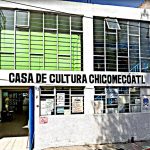
 55 9134 5447
55 9134 5447
 https://www.facebook.com/profile.php?id=100064568299247
https://www.facebook.com/profile.php?id=100064568299247

相近 0.03 kms.

相近 0.22 kms.

相近 0.29 kms.

A major recreational development in the Quetzalcoatl Urban Development. . .

One of Iztapalapa's most beautiful urban parks...

Iztapalapa's most sustainable and eco-conscious Utopia . . .

Chicomecóatl is a neighborhood center and cultural hub for communities in the shadow of the volcano.

A water-themed sports and cultural center on the northern slopes of the Sierra de Catarina.